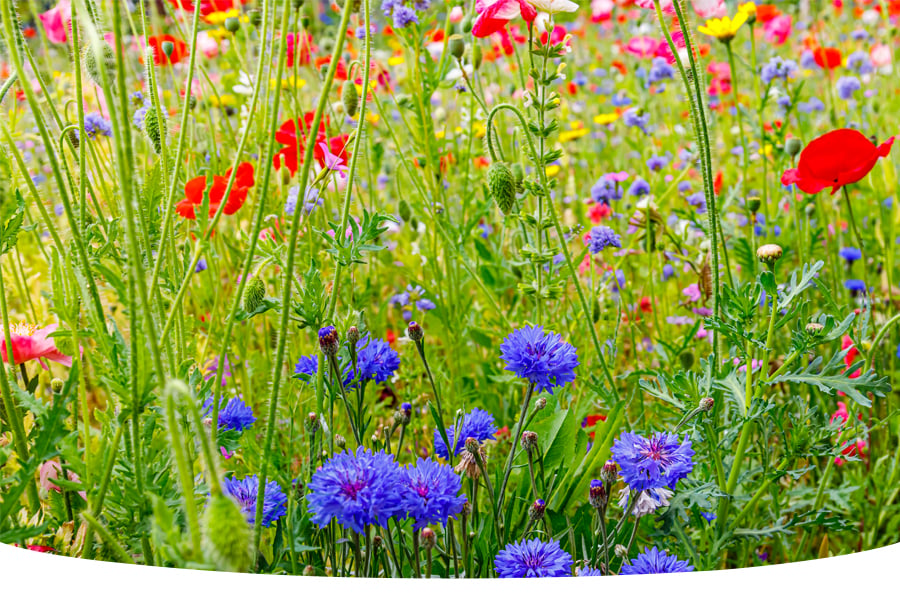5 common myths about wildflowers
Wildflowers are a common feature in wild areas throughout the UK, but when it comes to introducing them to your garden you may have a few reservations! In this blog, we bust the most common myths about wildflowers!

1) You can grow them anywhere
Wildflowers are a familiar find on roadsides and meadows, so it would be easy to think you can grow them just about anywhere! Whilst wildflowers can find their way into nearly every nook and cranny, in order to create a wildflower-full bed, border or meadow as opposed to a dusting of flowers here and there - you'll need to follow a few instructions first. Simply chucking down wildflower seeds will produce some flowers, but if you want to make sure any and all of the seeds you sow are going to grow - you'll need to take heed of these two things;
Removing grass, weeds and flora
For all of your wildflower seeds to grow and thrive, you'll need to remove all competition from the area where you plan to sow. This means taking away all grass, weeds and flora from the area. Not completing this step can mean your wildflowers won't have sufficient room to grow, and you may not have as many blooms as you would like.
Pick the right mix
Some wildflower species are better at growing in certain conditions like shade and clay soils than others, so if you want to make sure your wildflowers will grow and continue to bloom - you'll need to choose a mix that suits the area where you plan to sow. Some things to consider here are the size of the area, the soil type of the area, the shade level in the area and the look you want to achieve.
2) You should only sow UK native species
Back in 2019, the Spanish Bluebell was a hot topic of controversy in the world of botany over worries it was an invasive species that would overtake our native British Bluebell. This prompted campaigns to sow only native wildflowers. However, recent research from the RHS supports sowing wildflowers from all over the world - to support our pollinators and increase our biodiversity.
Our mixes contain a variety of UK native wildflowers alongside American prairie flowers to not only provide you with a longer-lasting, bloom-full display but to provide much more nectar to our very busy pollinators!
3) They come back every year
Wildflowers can be annuals or perennials, and this will affect whether they come back the following year after blooming. Annuals typically only bloom once and then die, whereas perennials will flower year after year. However, annual wildflowers can 'return' if you collect their seeds and sow them again! Whilst perennial wildflowers come back annually, throughout the years, the appearance of your wildflower meadow may change. Some wildflowers may thrive in the conditions you grow them in and will become abundant within your meadow, and others may not fare as well - this has to do with soil type, availability of light and weather conditions.
4) All wildflowers are good for wildlife
Wildflowers on their own are great for pollinators while in bloom, but when they aren't, they don't have much to offer wildlife. To provide year-round and year-on-year habitat for wildlife, you should sow a mix of annuals, perennials and grass. Annuals provide an almost instantaneous flourish of flora 60 - 80 days after they are sown, whilst perennial wildflowers will come back year after year. Meadow grasses make great habitats and hidey holes for hedgehogs, foxes, badgers and more - so they will help you to provide a 365-day sanctuary for wildlife!
5) You can only sow wildflowers in Spring
We often associate sowing with Spring as this is when growth in your garden resumes, but Autumn is also a brilliant time to sow wildflowers. Although you won't see blooms until the following year, Autumn temperatures (particularly in September) are still excellent for sowing. By sowing your wildflower seeds in Autumn, you can sit back and relax until the good weather resumes again - and enjoy your wildflower-full haven!
For further reading, we have more advice and tips for growing wildflowers in your garden:



